The cat is one of the most popular domestic animals, and at the same time one of the most complex creatures domesticated by man. Their psychological sensitivity and problems experienced by them can even lead a pet to physical diseases. This cat’s delicateness often manifests itself through various behavioural problems. Caregivers most often complain about tendency to scratch and bite their hands, sleep disturbances or general aggression of the pet. Due to the lack of improvement in the cat’s behavior and human helplessness it is not uncommon for a cat to be given away or, what’s worse, even abandoned. Many such cases could have been prevented if guardians understood their cats better, however to understand a cat one should look more closely at its original instincts.
Even a child knows that a cat, like any other being on Earth, must fulfill its basic physiological functions, namely eating, drinking, sleeping and defecating. However, a slightly more insightful caregiver will easily notice that such a very intelligent animal requires intense physical and mental stimulation.
Jackson Galaxy in his book “Total Cat Mojo” explains in a vivid way what the mojo concept is. Well, it is a kind of self-confidence and surroundings awareness, that are expressed in the way of being, a sense of stability and peace, which can achieve only a cat which has all needs fulfilled. When something is missing in a cat’s life, there is a shortage or excess of something, his confidence begins to decline, frustration appears, that are often associated with behavioural problems, i.e. behaviours usually unacceptable to man. The caregiver at the same time does not realize that in many cases regular play with the cat would be enough and many problems could have been avoided.
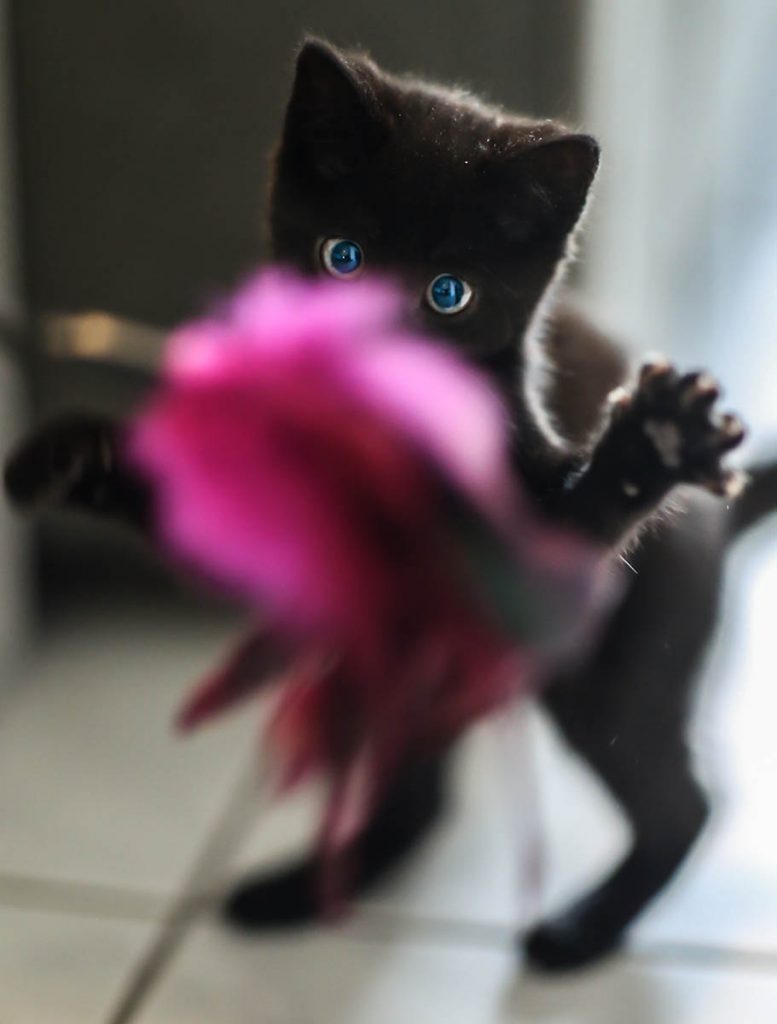
Why is playtime so important? For a child, playtime means exploring the world – it is the best way to learn. For a cat at the beginning of its life playtime has exactly the same significance. Kittens playing with each other and with their mother bite, chase, catch, what generally looks like wrestling. In this way they prepare for an adult life and for effective hunting. Hunting is part of the nature of a cat which wouldn’t simply survive without this skill. It is a primal instinct that cannot be extinguished. That need is just as important as eating, drinking and sleeping.
While our domestic kittens on the couch look like plush toys, they have a piece of wild nature and instincts of their wild ancestors inside and spending time at home are often simply bored.
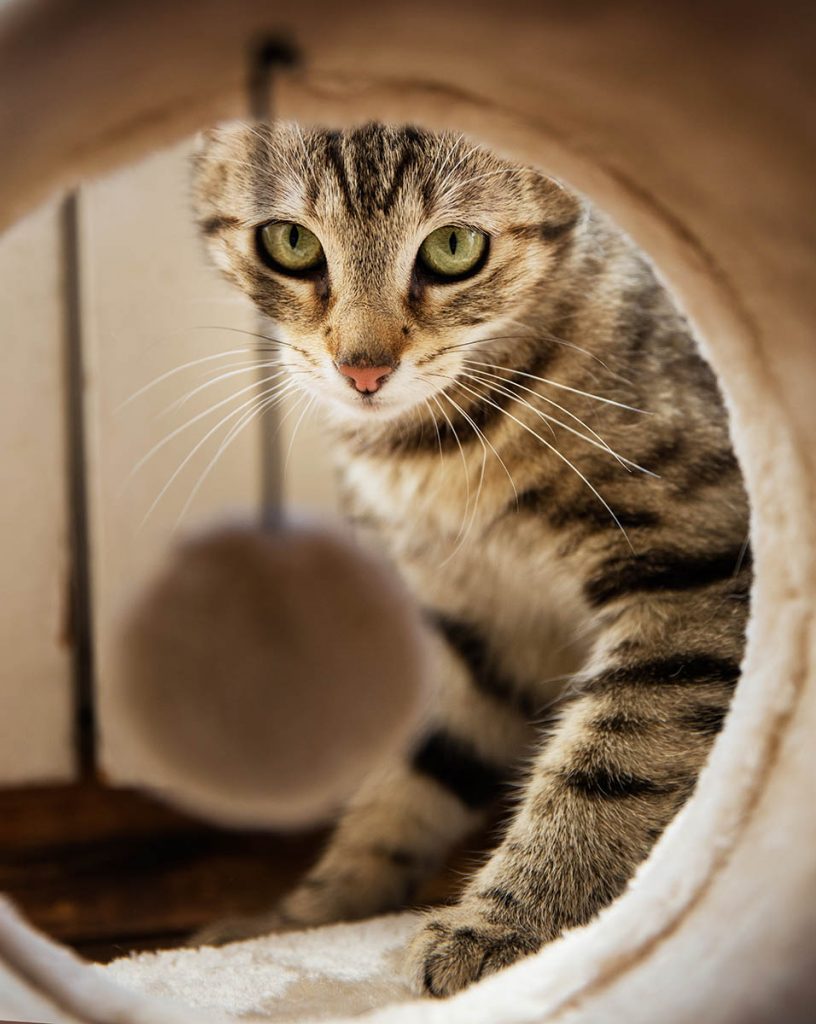
The arrangement of the surroundings is a very important part for satisfying cat’s instincts. Cats love to hide, climb, jump, search and mark territory by scratching. They also love observing surroundings from heights and the possibility of watching the outside world through the window can be compared to cat’s TV. Being aware of this, we can appropriately arrange the space by placing a cat tree with scratchers in the right place, making a lair for pets on the windowsill, hanging observation shelves, and even making the entire passageway for the cat under the ceiling. We can also use high shelves or arrange one shelf in the closet to create beds at heights.
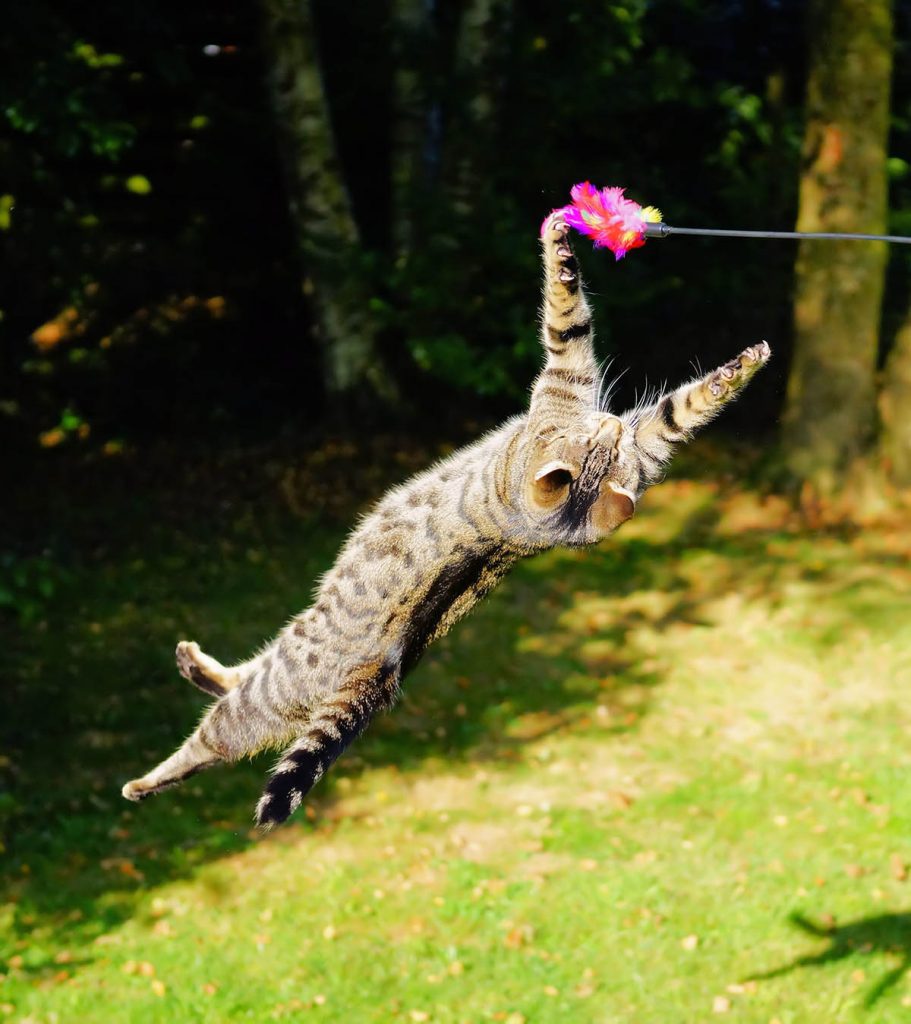
Every cat has deep coded inside that food has to be hunted down. In order to make a pet happy, it is necessary to provide so-called hunting cycle, i.e. provoke a cat to pretend to be hunting. For this purpose, long-distance toys are great, e.g. a rod with a string and attached feathers (known as a dangler pole). With this rod we mimic the movements of a live prey, to which cat sneaks, what is followed by a jump, catch, kill and … here comes an important part of the whole process: eating. Every play with a cat should end with eatin, because that’s what hunting is for. Thanks to this hunting process, we fulfill a very important cat’s need – thanks to which a cat feels like a real wild cat (not to say a lion 😊) and reaches its MOJO.
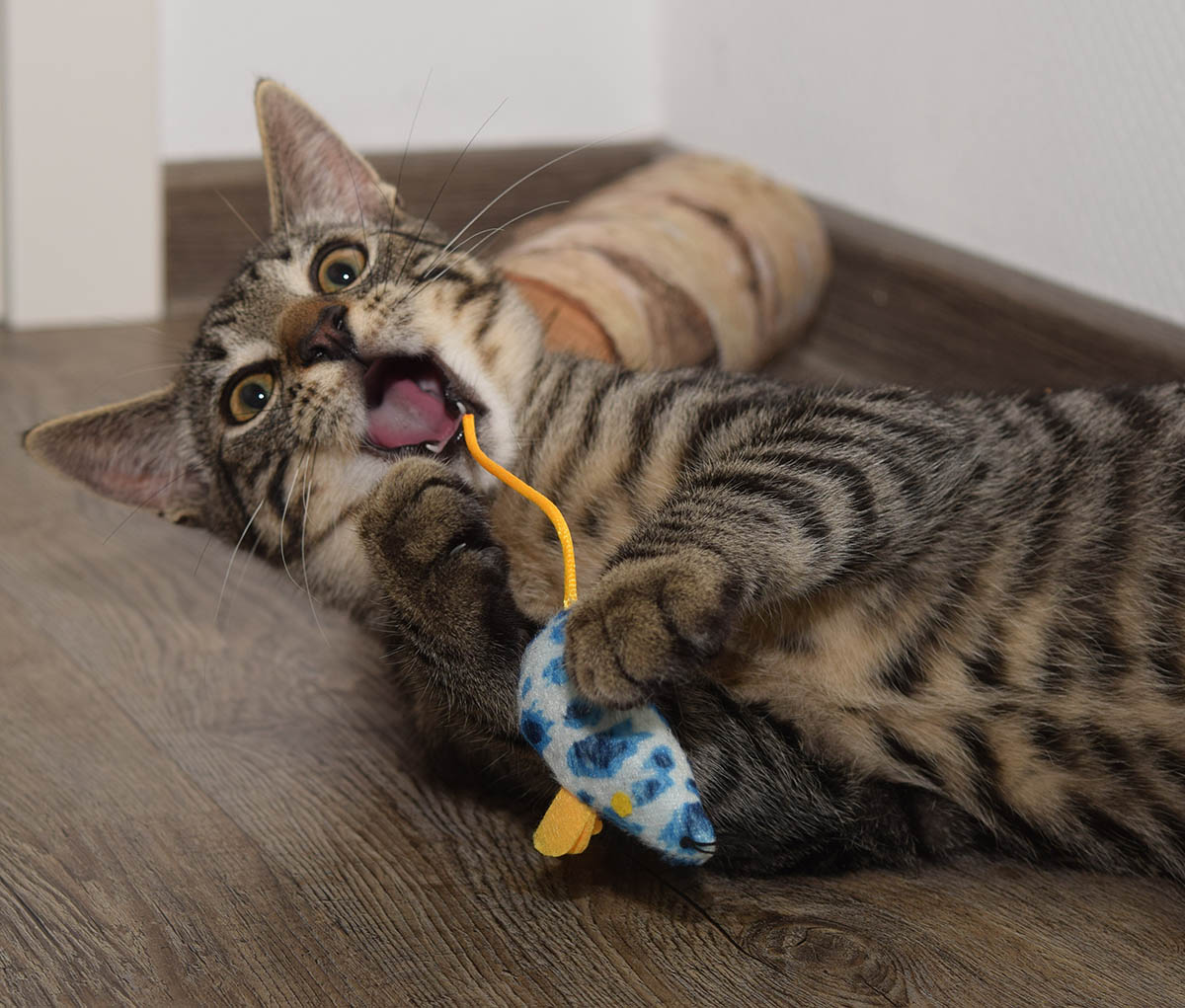
Playing with a dangler pole is an example of mainly physical activity because in this way it can get tired by running. Another form of activity that domestic cats should receive is mental activity that is accomplished by various types of olfactory mats, thanks to which a cat must sniff and grab food, which is also associated with hunting. All obstacles in getting food should work, eg. putting treats in cups of different sizes, folds, and even in an envelope, where the cat has to figure out how to get to them. There are a lot of toys of this type on the market but they can also be made at home using various food packaging, egg trays or toilet paper rolls to build a fortress with hiding places and nooks and crannies from which the animal will have to extract food.
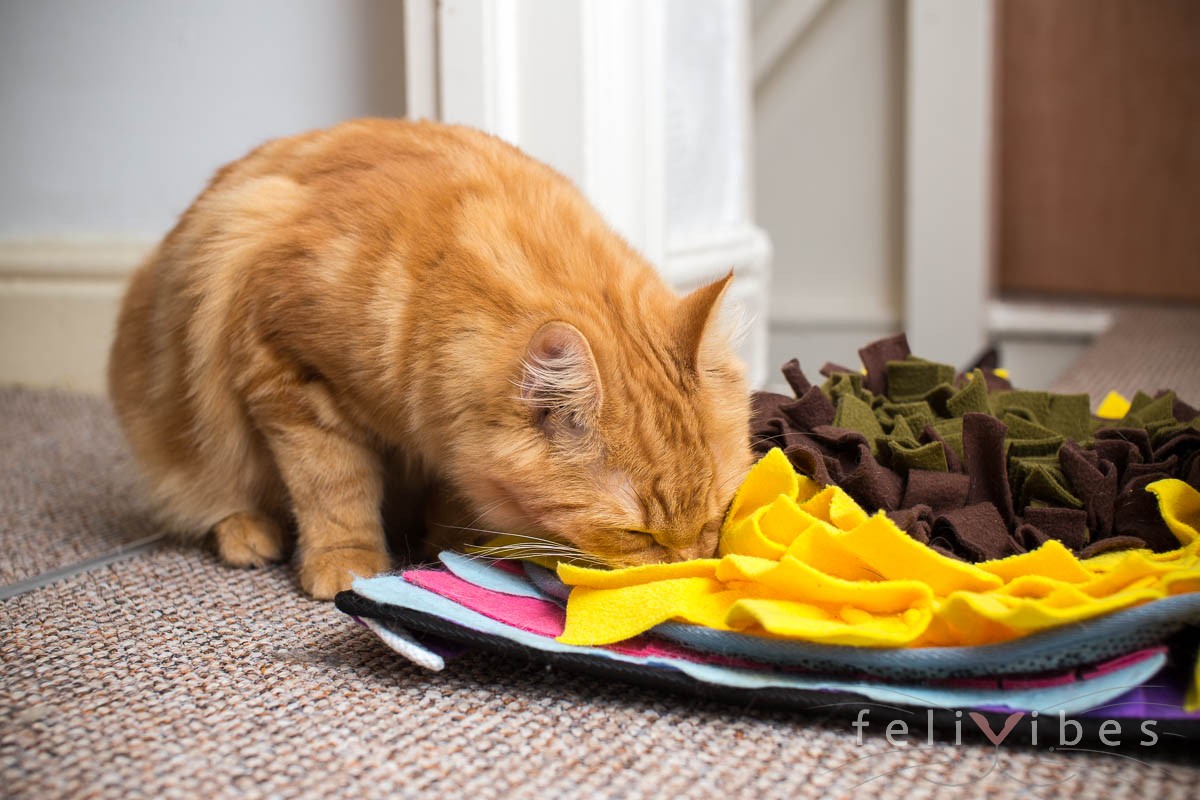
On the market you can also find balls with a hole from which the treats fall out when rolling what stimulates the cat both mentally (inventing a way to extract delicacies) and physically (running to keep up with the rolling ball).
There are plenty of ways to keep a cat busy and only our imagination is the limit. Let’s remember however, that playing with the cat should consists of provoking a pet to hunt and capture, and that each such play-hunt should end in feeding. Therefore, for example, laser pointers are not recommended, as the cat is not able to physically catch his victim, what in prolonged sessions can cause frustration and playtime won’t have the desired effect. If we introduce a routine to cat’s life with decent room to satisfy the instincts of our little predator then we will have the chance to be happy caregivers of a happy cat..

